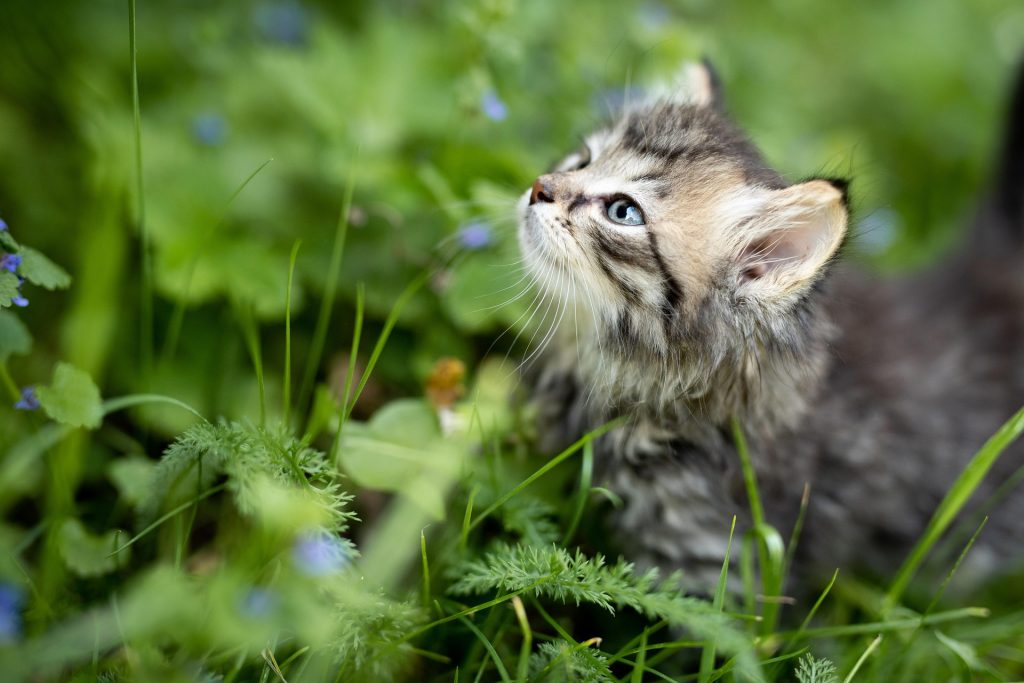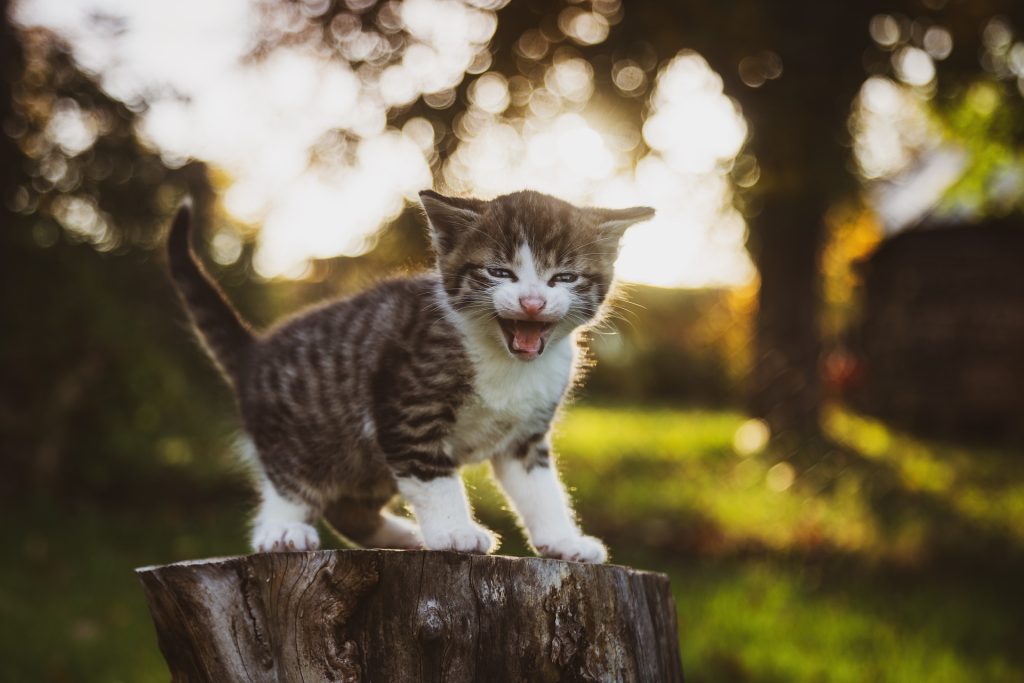Table of Contents
As a cat mom, I’m always cautious about how long my cat’s wet food can safely sit out. The consensus among experts is that wet cat food should not be left out for more than one to two hours. Beyond that time frame, there’s a risk that harmful bacteria could start to grow, leading to potential digestive issues for your feline friend. Plus, the texture of the food changes, which might make it less appealing to your cat, causing them to turn up their nose at mealtime.
So, when I serve up a delicious bowl of wet food, I make sure to put away any uneaten portions after my kitties have had their fill. This practice ensures their meals are both safe and enticing, helping to keep them healthy and satisfied. It’s all about creating a safe and enjoyable dining experience for them.
Understanding the Basics of Wet Cat Food Storage
Whether it’s food in a pouch or a can, wet cat food requires proper storage to ensure its freshness. I’ve learned that it’s crucial to serve it fresh each time and to promptly store away any leftovers. This step is essential in maintaining the quality and safety of the food, which is a top priority for any responsible cat owner like me. After all, we all want our furry companions to enjoy their meals without any risks.
The Risk of Leaving Wet Cat Food Out Too Long
Leaving your cat’s wet food out for too long is a gamble with their health. Bacteria thrive in moist environments, and wet cat food provides a perfect breeding ground when left at room temperature. If I were to leave the food out beyond the recommended time, I would be increasing the risk of my cats consuming something that could lead to an upset stomach, or worse, food poisoning.
That’s why it’s important to monitor how long their food sits out. If they’ve only eaten part of their meal, I promptly refrigerate the leftovers to prevent bacterial growth. It’s a simple step that goes a long way in protecting their well-being.
Refrigeration: Is It Essential for Wet Cat Food?
When it comes to the question of refrigeration, any food remaining after my cats are done eating is promptly stored in the fridge. I’ve learned that this step is essential to preserve the food’s safety and extend its shelf life. Cold temperatures slow down bacterial growth, ensuring that leftovers stay safe for my cats to eat later.
And when it’s time to serve it again, I usually let the refrigerated food sit out for a bit to reach room temperature, because my kitties prefer it that way. They seem to enjoy their food more when it’s not straight out of the fridge, and I’m happy knowing it’s still safe for them to eat.

Safe Food Handling Practices for Cat Owners
Feeding your cat involves more than just providing food; it’s about ensuring their meals are safe. As a cat owner, I implement safe food-handling practices to protect my cat’s health. This includes using clean utensils, checking expiration dates, and sealing leftovers properly. It’s all part of my commitment to keeping them healthy and thriving.
Best Practices for Serving Wet Cat Food
When feeding your cat, maintaining food safety and optimizing your cat’s health should be at the forefront. I always use clean bowls and utensils and keep an eye on the clock to prevent leaving food out too long. These best practices are part of being a responsible pet parent and ensuring the well-being of our feline companions in North America and beyond.
Portion Control to Minimize Waste
One of the best strategies I’ve found to minimize waste and maintain freshness when serving wet cat food is portion control. I gauge how much my cats typically eat and serve just the right amount to avoid leftovers. But if there are any, I promptly store them in the fridge for the next meal.
It’s a balancing act between ensuring they have enough to eat and not leaving excess food out that could spoil. Figuring out the right portion size has been a game-changer in reducing waste and keeping their meals fresh and appetizing.
Ideal Serving Temperatures for Palatability
Temperature plays a critical role in how much my cats enjoy their food. While wet and dry food can be served at room temperature, I’ve found that a serving can be warmed slightly to enhance its palatability, especially if it’s been stored in the fridge. My cats don’t like cold food, and warming it up a bit makes mealtime more enticing for them.
However, it’s important to avoid overheating, as it can affect the nutrients in the food and potentially cause burns. A gentle warming is all it takes to make their mealtime a delightful experience.
Guidelines for Storing Leftover Cat Food
When it comes to leftover canned cat food, I’m careful about storage. Any uneaten food is promptly placed in a covered container and refrigerated. This keeps it fresh and safe for when my cats are ready to finish their meal, ensuring nothing goes to waste.
Factors Influencing Wet Cat Food Shelf Life
Several factors can affect the shelf life of wet cat food. Proper storage in an airtight container is essential to extend its longevity and keep it safe for consumption. By understanding these influencing elements, I can ensure every meal I offer my cats is fresh and nutritious.
The Impact of Room Temperature on Wet Food
Room temperature can have a significant impact on the safety and quality of wet cat food. The warmer the environment, the faster bacteria can grow, shortening the window in which the food remains safe. I always keep this in mind and adjust my feeding routine accordingly to avoid any risk.
During hotter months, I’m even more vigilant about not leaving food out for too long and ensuring it’s stored in a cool place. It’s a simple measure that can prevent a lot of potential health issues for my cats.
Mixed Feeding: Wet and Dry Food Considerations
Mixed feeding can be a great way to provide a balanced diet, but it also requires careful consideration when it comes to storage. Wet food should never sit out as long as dry kibble, so I always remove any uneaten wet food promptly after mealtime.
This ensures that my cats get the benefits of both wet and dry food without the risks associated with improper storage. It’s a routine that keeps them happy and healthy, which is always my goal as a pet parent.
Identifying Spoilage Signs in Wet Cat Food
As a cat mom, I’ve learned to spot when wet cat food is no longer safe for my Siamese sweethearts. The telltale signs include a sour or unpleasant odor, a color change, or if the food has dried out and developed a hard crust. If the food’s consistency has changed, with a visible separation of ingredients or a slimy texture, it’s time to toss it. Cats have sensitive noses, and they’ll often turn their nose up at spoiled food, which is a clear signal it’s gone bad.
Other indicators include mold growth, which can appear as fuzzy spots or discolorations on the food. Always inspect the food before serving, and if there’s any doubt about its freshness, it’s better to err on the side of caution. Serving spoiled food can lead to gastrointestinal issues for your feline friend, and no one wants that. So, whenever in doubt, throw it out to keep your kitty safe and healthy.
The Importance of Nutrition and Freshness in Cat Food
As a devoted cat mom, I know that nutrition and freshness are paramount when it comes to what I feed my Siamese darlings. Fresh food is not only more appealing to them but also ensures they’re getting the full nutritional benefits. Stale or expired wet cat food just won’t do for my feline friends.
How Freshness Affects Nutritional Value and Taste
Freshness plays a crucial role in both the nutritional value and taste of pet food. I always check the freshness of the food I serve because feeding cats stale or expired wet cat food can lead to a lack of interest in eating and potential health issues. Fresh food, on the other hand, is packed with the nutrients my cats need to stay healthy and vibrant.
To maintain freshness, I cover the food and store any uneaten food properly. I also keep a close eye on my cat’s food to make sure my cat is eating well. Sticking to a routine with regular intervals between meals ensures that each serving of cat food options is as fresh as possible. If I notice any decline in flavor or texture, I know it’s time to refresh my cat’s food supply.
The Role of Routine in Promoting Consistent Eating Habits
I’ve seen firsthand how a consistent routine can promote healthy eating habits in my cats. Regular feeding times help my kitties know when to expect their meals, which can alleviate stress and anxiety. This consistency also allows me to monitor their eating patterns closely, ensuring they maintain a balanced diet.
Establishing a regular schedule also helps me manage portion control and prevent overfeeding or underfeeding, which is essential for their overall well-being. By feeding my cats at the same times each day, I help them develop a rhythm that keeps their digestive system on track and their appetite consistent.
Tips for Keeping Your Cat Happy and Healthy
Keeping your cat happy and healthy involves more than just regular vet visits; it’s about daily care and attention to their dietary needs. Serving fresh, nutritious meals in a comfortable environment is key to their well-being.
The Variety Factor: Incorporating Different Flavors and Textures
Offering a variety of flavors and textures can keep your cat’s meals exciting. I rotate between different cat food options to ensure my kitties never get bored. One day it might be chicken, the next day fish, and sometimes I’ll even throw in a special variety pack as a treat.
Trying out different brands and protein sources not only keeps mealtime interesting but also ensures a well-rounded diet. This variety can stimulate your cat’s appetite and cater to their finicky eating habits, making each meal an adventure in taste.
Establishing a Feeding Schedule That Works for Your Cat
Every cat is different, and finding a feeding schedule that suits your fur baby is essential. I observe my cats’ behavior and adjust their meal times accordingly. Some cats may prefer smaller, more frequent meals, while others do well with two main meals a day. It’s all about adapting to their needs.
Once I find a schedule that works, I stick to it. Consistency is key for my cats. It helps regulate their metabolism and ensures they’re eating the right amount at the right times. If there’s uneaten food, I don’t let it sit out; instead, I promptly put it away to maintain freshness and prevent spoilage.

Navigating the Dilemma of Uneaten Wet Cat Food
As a cat mom, I’ve often faced the challenge of uneaten wet cat food. Whether my feline friends lose interest or get full, it’s important to handle leftovers properly. I know that wet food can’t sit out indefinitely, so quick action is essential to prevent spoilage and ensure my cats’ health.
What to Do With Leftover Wet Cat Food
If I find that my Siamese pals haven’t finished their meal, I immediately scoop the leftovers into an airtight container. It doesn’t matter if the food came from a pouch or a can; freshness is key. Then, I pop the container into the fridge to keep it safe for their next meal. I make sure to use these leftovers within a day or two to maintain their freshness and nutritional value.
On the chance that the wet food has been out for more than a few hours, I’d rather be safe than sorry and dispose of it. I wouldn’t want my cats to eat something that could potentially harm them. Plus, it’s a good practice to clean the bowl thoroughly after discarding the old food to prevent any bacteria from lingering.
How to Prevent Waste and Overfeeding
Preventing waste starts with portion control. I’ve learned to gauge just how much my cats typically eat and serve them a bit less, ensuring they finish their meal without leftovers. This not only conserves food but also helps maintain a healthy weight. If I notice a consistent pattern of uneaten food, I adjust the portions accordingly or consider if it’s time to switch up flavors.
To avoid overfeeding, I stick to a strict feeding schedule. This routine helps my cats know when to expect their meals, reducing the likelihood of them begging for more throughout the day. If I mix wet and dry food, I’m careful to account for the calories from both to keep their diet balanced. It’s all about finding that purr-fect balance to keep them happy and healthy.
Preserving the Purr-Fect Meal: A Comprehensive Guide to Wet Cat Food Safety
As a devoted cat mom, I’m always cautious about leaving food out for too long, especially wet cat food. Whether it’s packaged in a pouch or a can, it’s crucial to serve it fresh and ensure any leftovers don’t linger beyond mealtime. I’ve learned that health issues can arise from bacteria growth in wet food left at room temperature. To keep my furry friends safe, I promptly store uneaten portions, rather than letting them sit out. This not only maintains the food’s safety but also its appealing taste for my fussy eaters.
When it comes to handling leftovers, my go-to method is to scoop the remaining wet food into a Ziploc bag before placing it in the refrigerator. This simple step is key to preserving freshness and preventing waste. An airtight seal helps keep the food from drying out and absorbing odors. Plus, it’s easy to portion out the next meal when the food is already in a bag – just let it warm to room temperature for a bit, and it’s ready for my kitties to enjoy again!

Hi, I’m Zoey, a devoted mom to two charming Siamese cats. My passion lies in assisting fellow pet owners in providing optimal care for their cats. On CatsEuphoria, I share practical tips and relatable stories, inviting you to join me in appreciating the authentic bond between humans and our beloved feline companions.




